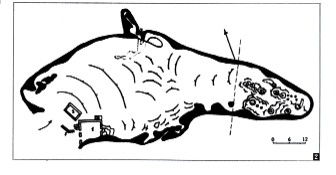
Directions to the Davelis Cave with photos
The Byzantine Chapels at the Davelis cave
Military
constructions at the Davelis cave
Mysteries of the Davelis Cave
Detailed aerial photos of the cave & surrounding area
The Davelis Cave
(THE CAVE OF LISTARCHOS DAVELIS)
(Also known as the Amomon cave)
South-western
slopes of Mount Pendeli
Northern Athens, Greece
Location: 38° 04' 14.80" N, 23° 52' 37.11" E
The Davelis Cave is located in and above an ancient marble quarry, where much of the marble for the Parthenon on the Acropolis of Athens was excavated. It's exact location is not widely known (except to some climbers who scale the surrounding cliff) & it is infrequently visited as the rough track leading to the cave is unmarked.
The
cave was known as a shrine since antiquity & was a used by worshipers of
the Greek god Pan. Artificial and natural niches and pedestals on the
walls once held statues and offerings. A hollow in the wall bears a small water
pool.
There was another Pan shrine in a much smaller cave (2nd century AD
Nymph shrine or Nymphaion) a few hundred meters higher up on the mountain.
This small cave has been greatly destroyed by the quarrying operations during
the recent decades. Artifacts from this Pan shrine are held & once exhibited
at Athens Archeological Museum.
Later during the Christian-Byzantine era it was inhabited by hermits & later by monks & holy men. Around the 8th century AD, Mount Pendeli, riddled with more than sixty known caves and hollows, acquired the name 'Mountain of Amomon (the Sinless Ones), as many Orthodox monks retreated to the mountains to avoid persecution and preserve their Byzantine tradition and some took refuge there. Carvings of angels on the rock walls of the Cave of Amomon, or Davelis, at a height of approximately 700 metres on the south-west face of the mountain above an ancient quarry, have been provisionally dated to this period on the basis of their style.
At the entrance of the cave there are two small adjoined Byzantine chapels dedicated to Saint Nicholas and Saint Spyridon. The dome of the larger chapel is inscribed with the date 1234, and was decorated with a mural, now removed to the Byzantine Museum, which represented the last Greek archbishop of Athens, Michael Akominatos
Legends
tell that in the mid-19th century Davelis, a famous robber and outlaw,
used the cave as one of his many hideouts around Attica. Davelis had a kind
of Robin Hood status, and was popular with various romantic society ladies.
Legend also says that Davelis had an ongoing affair with the Duchess of Plakentia,
a French noblewoman who lived in a mansion (the Villa Rododaphne?) further down
the mountainside, near Old Pendeli village. Legend also says that there was
a system of tunnels connecting the cave with Duchess's palace and
also the nearby Pentelikon Monastery.
(A few years ago about 200 metres of this tunnel was shown on Greek TV by television
journalists - to a point after which the tunnel had collapsed, blocking any
further exploration).
Davelis career ended when he was pursued and killed near Mount Parnassos, and
his head taken to Athens and displayed on a pike in Syntagma Square.
Apparently, the seventeenth century Turkish traveller, Evlia Tselepi, claimed that he was shown extensive underground galleries by a monk of Pendeli, and it is probable that their entrance was gained via Daveli's Cave.

Plan view of the cave (Approximately 70 m long, 45 m wide, 20 m high).
Note the elevated section to the right of the dotted vertical line (which extends the length at least 25 m).

The
entrance to the Davelis Cave from a distance. (Use Horizontal scroll to view the
whole photo ->)
Note the concrete structure built by the Greek military to the left of the cave
entrance - secured by a steel door.
The sheer rock face is sometimes scaled by rock climbers.
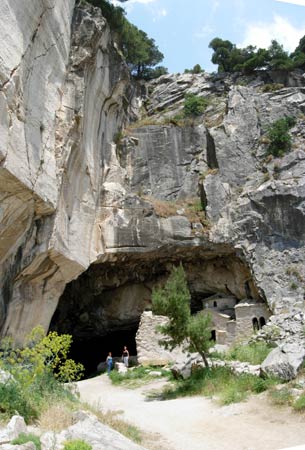
The
entrance to the Davelis Cave at the foot of the large cliff.
The chapels can just be seen.
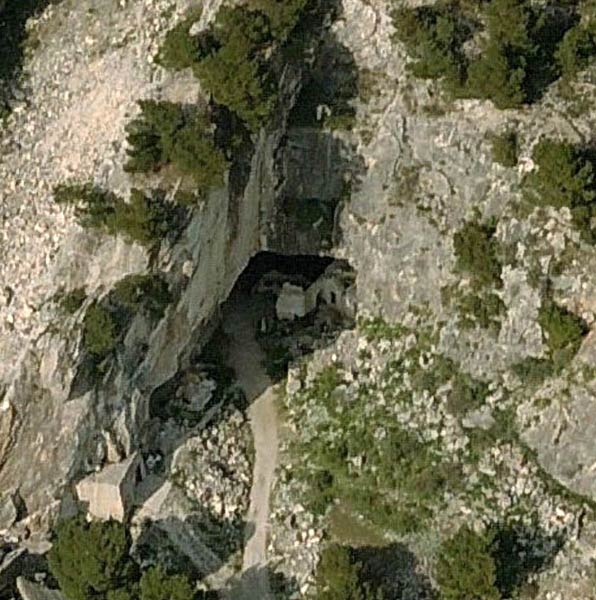
Aerial view of the cave and chapels

Panoramic view of the entrance to the cave (Scroll right to view the Byzantine chapels)
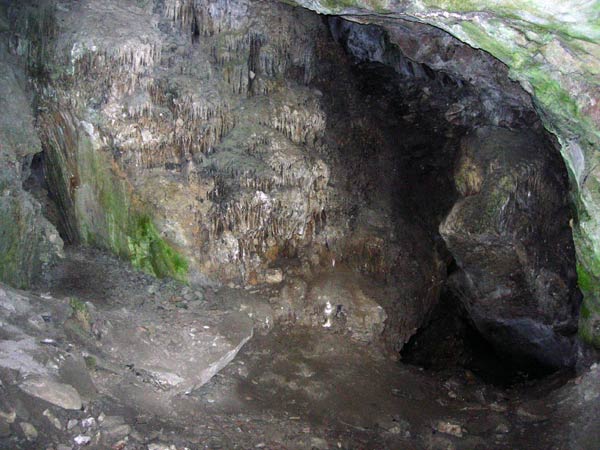
Cascade of Stalactites near the entrance to the cave.
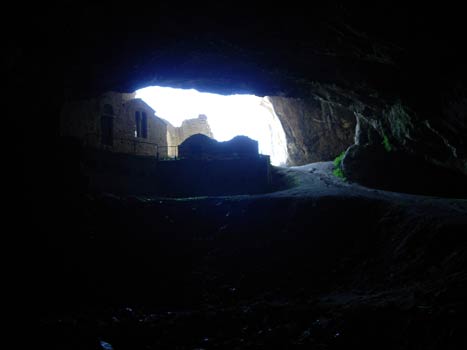
From
inside the huge cave
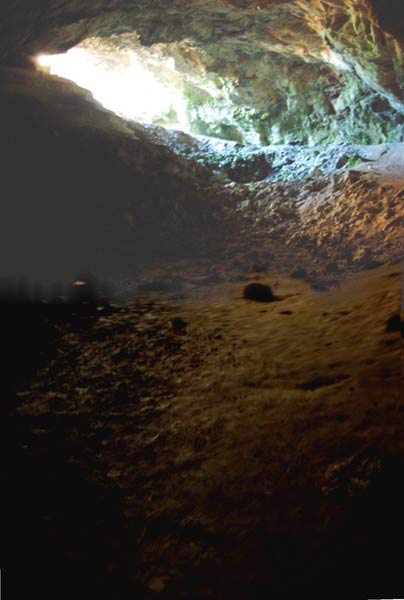
View from near the back of the floor of the cave
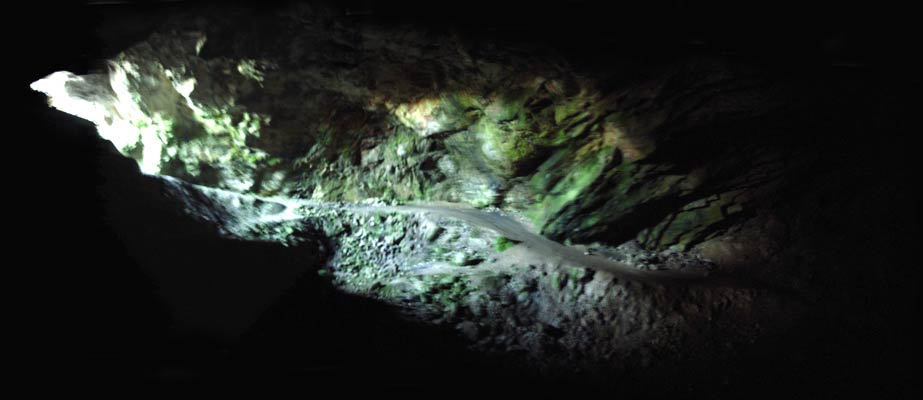
View from the elevated section - high-up at the back of the
cave
(Note the scale of the footpath)
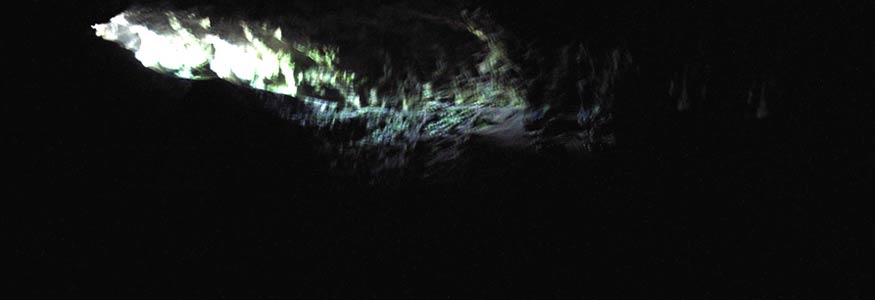
Light penetrates the cave as the sun drops low in the sky & the bats become active

View from high in the back of the cave - the sunlight shining
through the entrance to the cave can be clearly seen.
(Use horizontal scroll to view ->)

Same view from the back of the cave as the sunlight fades and
the cave becomes dark inside.
Sounds of water dripping from the roof and strange cracking sounds can be heard.
Very spooky!
(Use horizontal scroll to view ->)
Holes in the cave walls disappear underground...
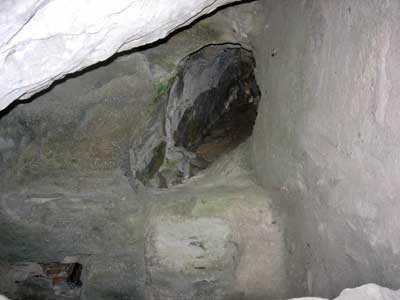

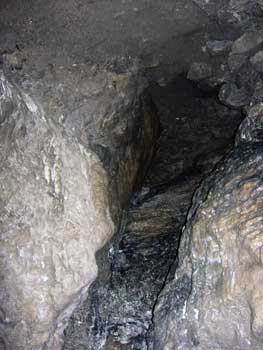
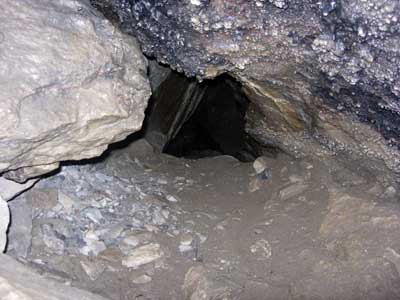
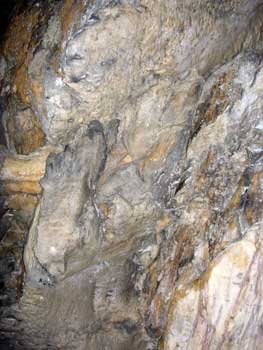
Stalactite or Stalagmite?
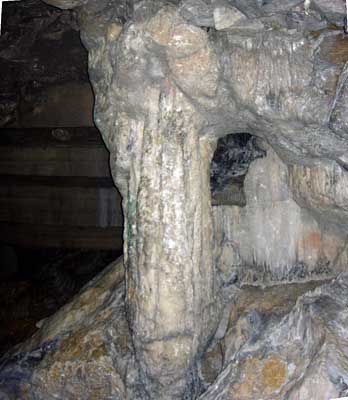
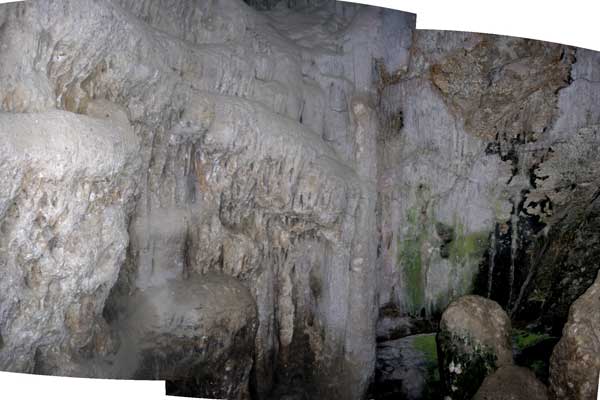
VIEWS FROM JUST BELOW DAVELIS CAVE
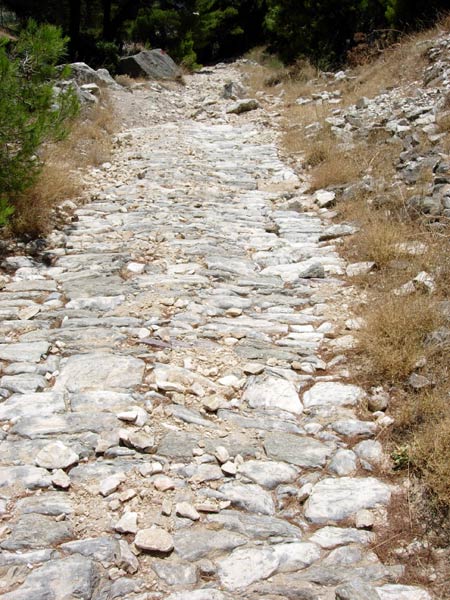
Ancient road built to transport marble from the quarries
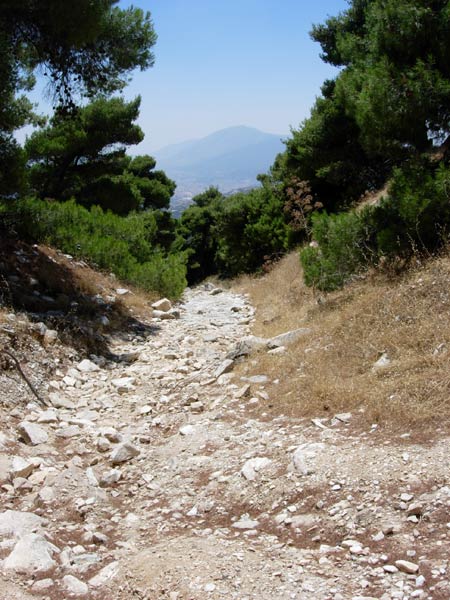
The road continues down the mountain

Panoramic view from a little further down the ancient road (scroll right > to see the road continuing down the mountain)
AND WHEN
THE SUN SETS,
THE VIEW FROM THE MOUNTAINSIDE NEAR THE CAVE:

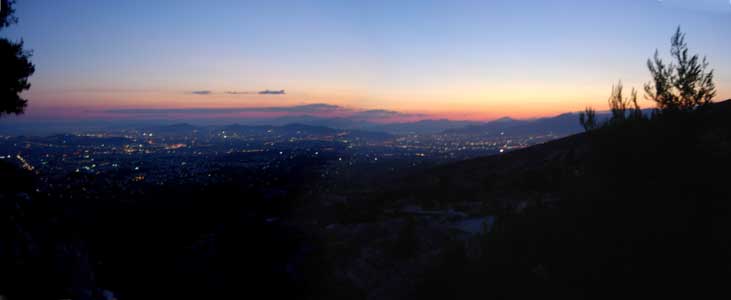
THE VIEW OF THE CITY LIGHTS AFTER THE SUN SETS

Scroll right to see complete view >